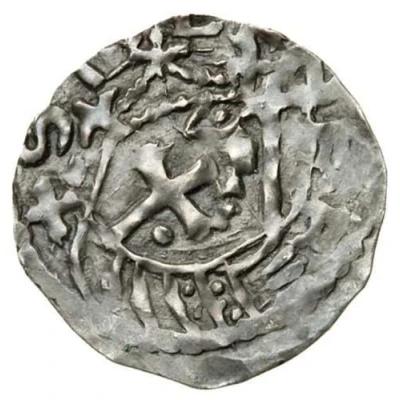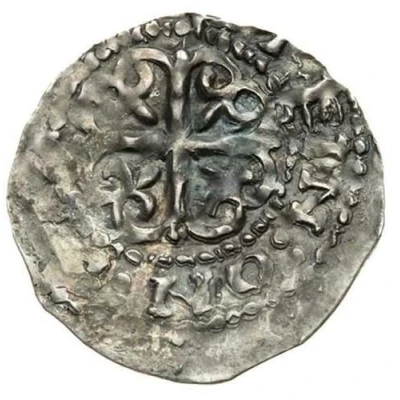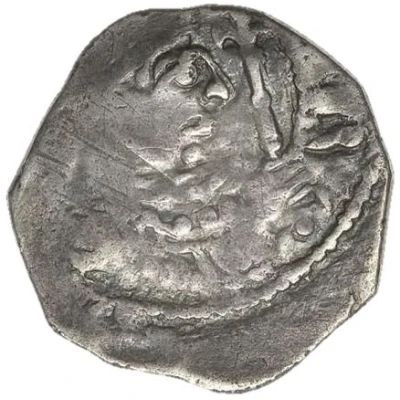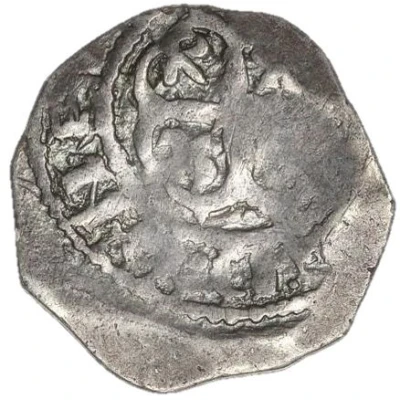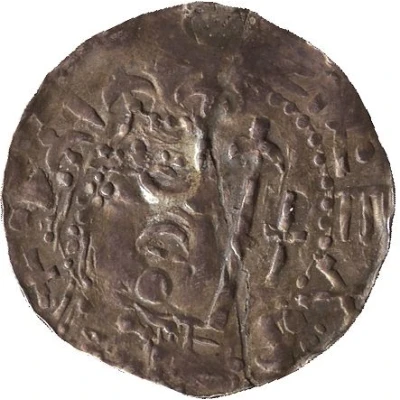
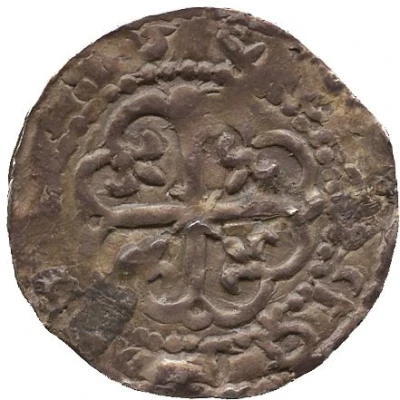

© A. H. Baldwin & Sons Ltd
Penny - Civil War Cross Moline / Defaced ND
| Silver | 0.88 g | - |
| Issuer | England (United Kingdom, British Overseas Territories and Crown Dependencies) |
|---|---|
| King | Stephen (1135-1154) |
| Type | Standard circulation coin |
| Years | 1138-1145 |
| Value | 1 Penny |
| Currency | Penny (924-1158) |
| Composition | Silver |
| Weight | 0.88 g |
| Shape | Round (irregular) |
| Technique | Hammered |
| Demonetized | Yes |
| Updated | 2024-10-08 |
| Numista | N#317422 |
|---|---|
| Rarity index | 100% |
Reverse
Cross pattée within quatrefoil, fleur de lis in each angle, beaded circle surrounding, retrograde uncertain legend.
Comment
Kings of all England (924-1158), Stephen (1135-54), Local and irregular issues of the Civil War, Cross Moline type penny with defaced obverse.Nottingham mint; uncertain moneyer (original). Struck circa 1138-45. Mack#148, 150-54
Stephen of Blois seized the English throne on the death of his uncle, Henry I, despite his oath to support Matilda, with whom he contended for power during his reign.
Coins struck from erased dies late 1130s-c.1145:
The association of these coins with the Interdict of 1148 is erroneous. Some of the marks that disfigured the dies were probably cancellation marks, but the exigencies of the civil war required the re-use of the dies. Other defacements may well be an overtly political statement.
Interesting fact
The Cross Moline / Defaced Penny coin from England, minted between 1138-1145, has a unique feature - it has a cross moline (a cross with curved arms) on the reverse side, which was a symbol of the Plantagenet dynasty that ruled England at the time. This coin was issued during the Civil War period, which was a time of great conflict and upheaval in England, and the defaced design on the coin may have been a deliberate attempt to obscure the royal symbols and avoid association with the ruling party.
